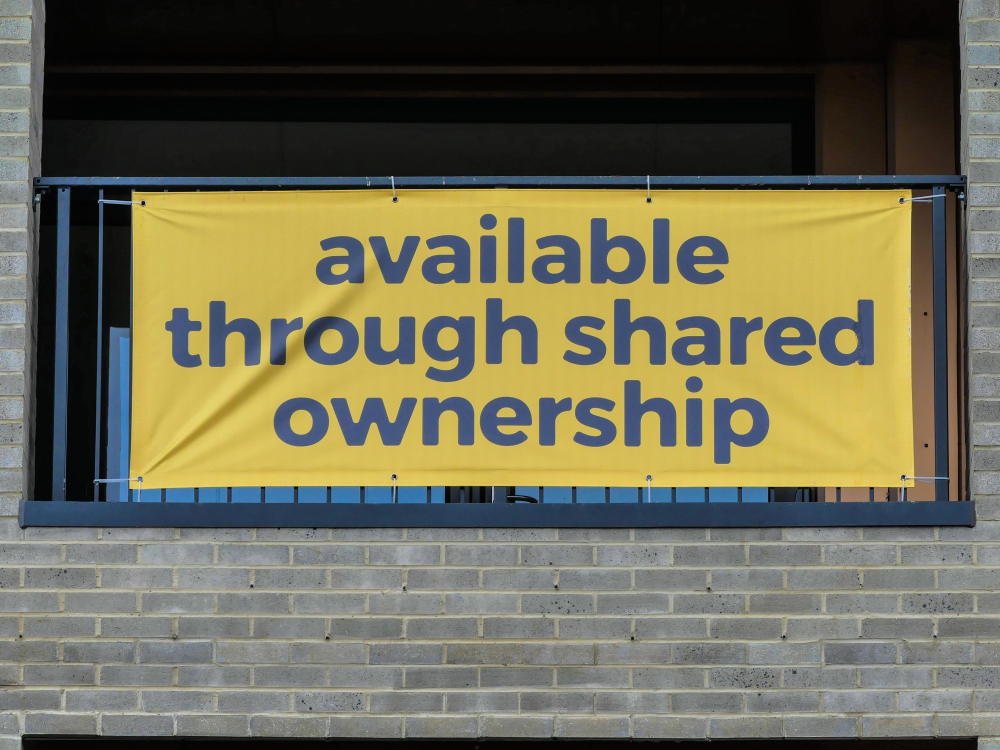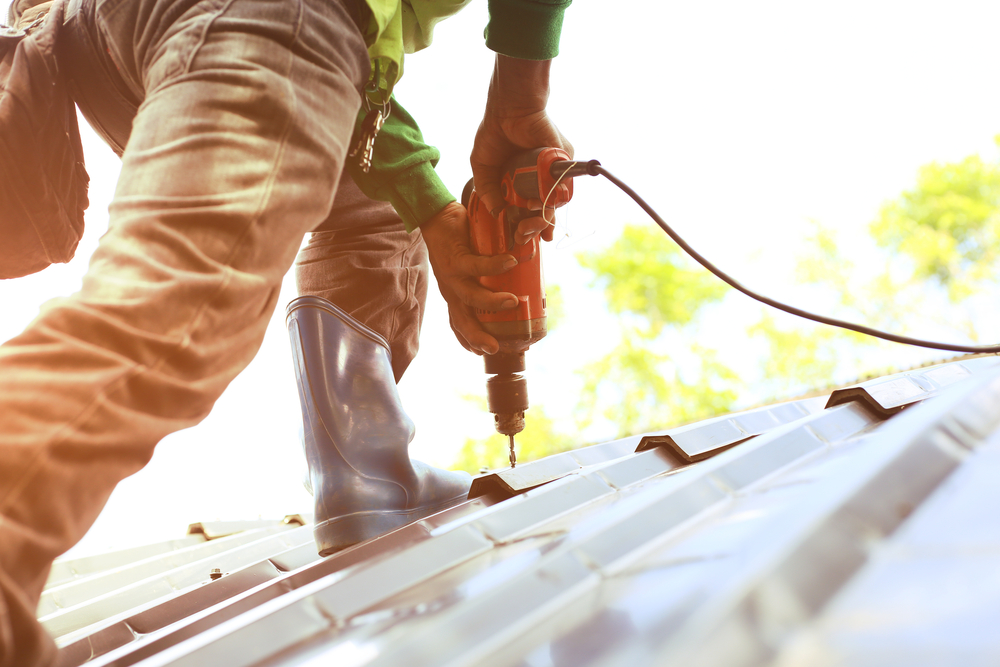With house prices, inflation rates, and the cost of living all rising at rates far greater than average wages, a large percentage of the UK population is being priced out of purchasing property – particularly first-time buyers.
As such, being a new homeowner can seem out of reach for many people. Fortunately, prospective buyers can take a slightly unconventional route to home ownership – shared ownership.
Also referred to as ‘part buy part rent’, shared ownership is a government-backed scheme that allows buyers to own a part of a property. It’s a simple concept in theory but is much more nuanced in practice and isn’t something to rush into.
That’s why this article will cover what shared ownership is, its pros and cons, and who is eligible for the government scheme so that you can make an informed decision on whether it’s suitable for you.
What is shared ownership?
Shared ownership is when you buy a share of a property, starting at a minimum share of 10% of the property’s value. The government-backed scheme was introduced to help first-time buyers become homeowners as it requires a lower deposit and mortgage compared to traditional home ownership.
Shared ownership homes are usually provided by housing associations that own the remaining percentage of the home. You can gradually increase ownership to 100% over time, known as ‘staircasing’.
Until then, since you are a part-owner, you will still have to pay rent on the share you do not own. Fortunately, you will be charged a discounted rate.
It should be noted that the home under a shared ownership scheme will be a leasehold property. It only becomes a freehold property once you have staircased up to own the property outright.
What are the pros and cons of shared ownership?
Shared ownership has undeniable benefits, such as getting your foot on the property ladder, being able to increase your share to full ownership, and needing a lower deposit and mortgage. On the surface, it can seem like shared ownership provides you with all the benefits of being a homeowner minus the risks associated with a full mortgage.
But this doesn’t paint the whole picture, and as with most things, there are notable downsides to shared ownership. This includes ongoing maintenance charges, hefty costs associated with increasing your share, the risks of being a tenant, and the difficulty of selling your share. Before we explore these in more detail, let’s recap what shared ownership is.
Am I eligible for the shared ownership scheme?

Although shared ownership properties are most common with first-time buyers, it’s not exclusively limited to them. To be eligible for the scheme, you must satisfy both of the following criteria:
- You have a pre-tax household income of £80,000 or less per year (£90,000 or less if you live in London)
- You cannot currently afford the deposit or mortgage payments for a home which meets your needs
In addition to satisfying the above criteria, you must also satisfy one of the following:
- You are a first-time buyer and do not own, or partly own another property
- You are a previous homeowner but cannot afford to buy a property at the current market value
- You are currently a shared owner but want to move
- You are currently a homeowner and want to move but cannot afford to buy a property at the current market value
What are the benefits of shared ownership?
Can get you onto the property ladder
One of the most challenging things first-time buyers face is simply getting onto the property ladder. With house prices hitting record highs and inflation being the highest in 40 years, it’s becoming harder and harder for young adults even to get their foot in the door. That’s where the benefit of a shared ownership scheme really shines.
Instead of having to be frugal and saving for years to buy a property on the open market, you can give yourself a headstart by taking a shortcut – owning a share of a property. This allows you to be an owner-occupier who still has to pay rent, but at least you’re paying rent on a property that you own.
Requires a lower deposit

Another advantage of shared ownership schemes is that you don’t have to buy a property outright, which would require at least a 10% deposit on the property’s market value. When you own a part of a property, you will only have to pay a deposit on the value of the property you own. Thus, your deposit for a shared ownership property will be much more affordable.
For instance, suppose you’re buying 25% of a shared ownership property with a market value of £250,000. This means the value of your share costs £62,500. Your ownership share would require a 10% deposit of £6,250, compared to a £25,000 deposit if you wanted to buy the full property. As you can see, shared ownership properties need a much lower deposit, making them much more reasonable.
You can’t be evicted under Section 21
As an owner and occupier of a property, you cannot be evicted from your property under Section 21. On your end, you simply have to ensure that the rent and monthly mortgage payments are paid on time. If they are, you’ll be able to stay in your home for the full duration of your lease.
You can increase your share to 100%
Most shared ownership properties will allow you to buy more shares as you go, called ‘staircasing’. This means that you can eventually have complete ownership of the home over time.
For most homes, you must staircase in 10% increments, but this isn’t always the case. On some newer properties, you can staircase by as little as 1%.
The benefit is that since you’ll be borrowing less money from a lender in one go, your monthly mortgage repayments will also be reduced. This allows for a more gradual – and perhaps sustainable – route to home ownership instead of becoming a homeowner the traditional way.
Increased equity over time
Historically, property has been one of the best assets to invest in. If the last few years have shown us anything, this still holds. Therefore, as the years pass, the value of your home is generally expected to increase, and when it does, so will the value of your equity.
You can use your increased equity in various ways, such as selling your shares and using them for another investment or taking the next step in your property ladder journey.
What are the downsides to shared ownership?
Staircasing isn’t cheap
With shared ownership homes, the end goal is usually to increase your share to 100%, to where you have complete ownership of the property. This may sound good in theory, but in practice can be slightly challenging due to the many costs involved. You will be required to pay the following:
- Valuation fees – The cost to have the property’s market value surveyed
- Legal fees – The cost to make changes to your lease as you increase your share
- Mortgage fees – Changing lenders to fund share purchases or for better interest rates will incur costs with your existing lender
This is alongside the costs to purchase extra shares, making each increase a costly process.
Maintenance charges can add up

Alongside the costs of ground rent, your mortgage, and those mentioned above, there will be ongoing maintenance costs. These are costs associated with the overall care of the property and can include:
- Service charge – The cost of cleaning and repairing communal areas (e.g. communal gardens in a block of flats)
- Estate charge – The cost of maintaining communal areas not covered by the service charge (e.g. roads)
- Management fee – Administration costs paid to the landlord
- Repairs reserve fund – A fund that covers the cost of repairs such as a roof replacement
If you own 25% or more of the property, the total maintenance and repair costs will be your responsibility.
You’re still a tenant
At the end of the day, regardless of whether you own 10% or 90% of your property, you’ll still be paying rent on the share you do not own. Therefore, you’re technically still a tenant with a landlord – usually the housing association – and this is the case until you have staircased to 100% ownership.
As such, you’ll be subject to all the rules that regular tenants have to adhere to, like paying your rent on time, inability to make structural changes, no sub-letting, etc. You may even be restricted with what decorative changes you can make to the property.
Breaking the rules stated in your rental agreement can result in you being evicted. If this happens, you may not receive your equity in the property until it’s sold. This could be months or years down the line, so it’s important to keep this in mind.
You may not be exempt from Stamp Duty Land Tax
If you’re a first-time buyer looking to buy a house the traditional way, you will be exempt from paying Stamp Duty. This is called the ‘first-time buyer exemption’. However, this does not apply with some shared ownership homes, which means that you could be required to pay Stamp Duty once your share has equalled or exceeded 80%.
Selling your share can be challenging
Unlike a home you own outright, you can’t immediately sell your share in the open market. First, the housing association or local authority gets the first refusal. If they do not wish to buy your share, then they will attempt to find an eligible buyer for anywhere between four to eight weeks.
If a suitable buyer has not been found after this period, only then are you allowed to advertise your share on the open market. Still, finding a buyer isn’t always easy.
Finding a good deal from a shared ownership mortgage lender can be tricky, which reduces the number of potential buyers you have to choose from.
Risk of negative equity
As with many large purchases, there’s always the risk that you’ll lose money when it comes time to sell. Although we’ve seen a trend of increasing house prices for the last few years, if house prices fall due to a market downturn, you could find yourself with negative equity.
Negative equity is when a property’s market value is below its outstanding mortgage. So if you’re looking to sell your property and you’re in negative equity, either your mortgage lender will require you to pay the difference out of pocket, or they will stop you from putting it on the market.
Final thoughts
Shared ownership can be an alternative route to becoming a homeowner. You benefit from being able to own as little as 10% of a property and increasing your share over time instead of taking out a large mortgage. This helps you get onto the property ladder with limited risk.
Although it can be the perfect middle ground between owning a property and renting it until you have complete ownership of the house, it does have some drawbacks. Staircasing comes with its own costs that can be expensive, particularly if you’re staircasing in small increments. You also have to factor in the ongoing maintenance charges for the property’s upkeep and challenges associated with selling your share if you want to move.

